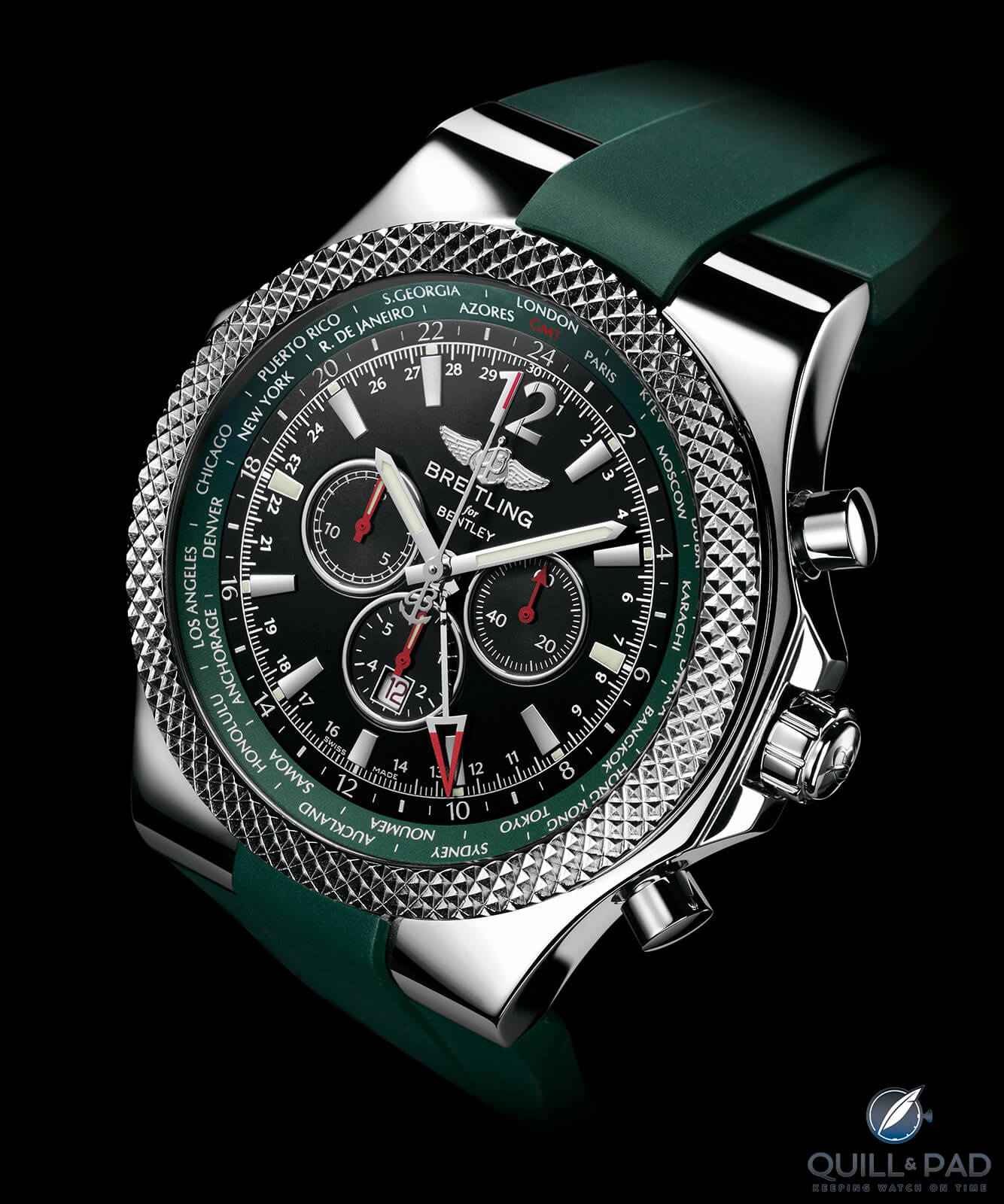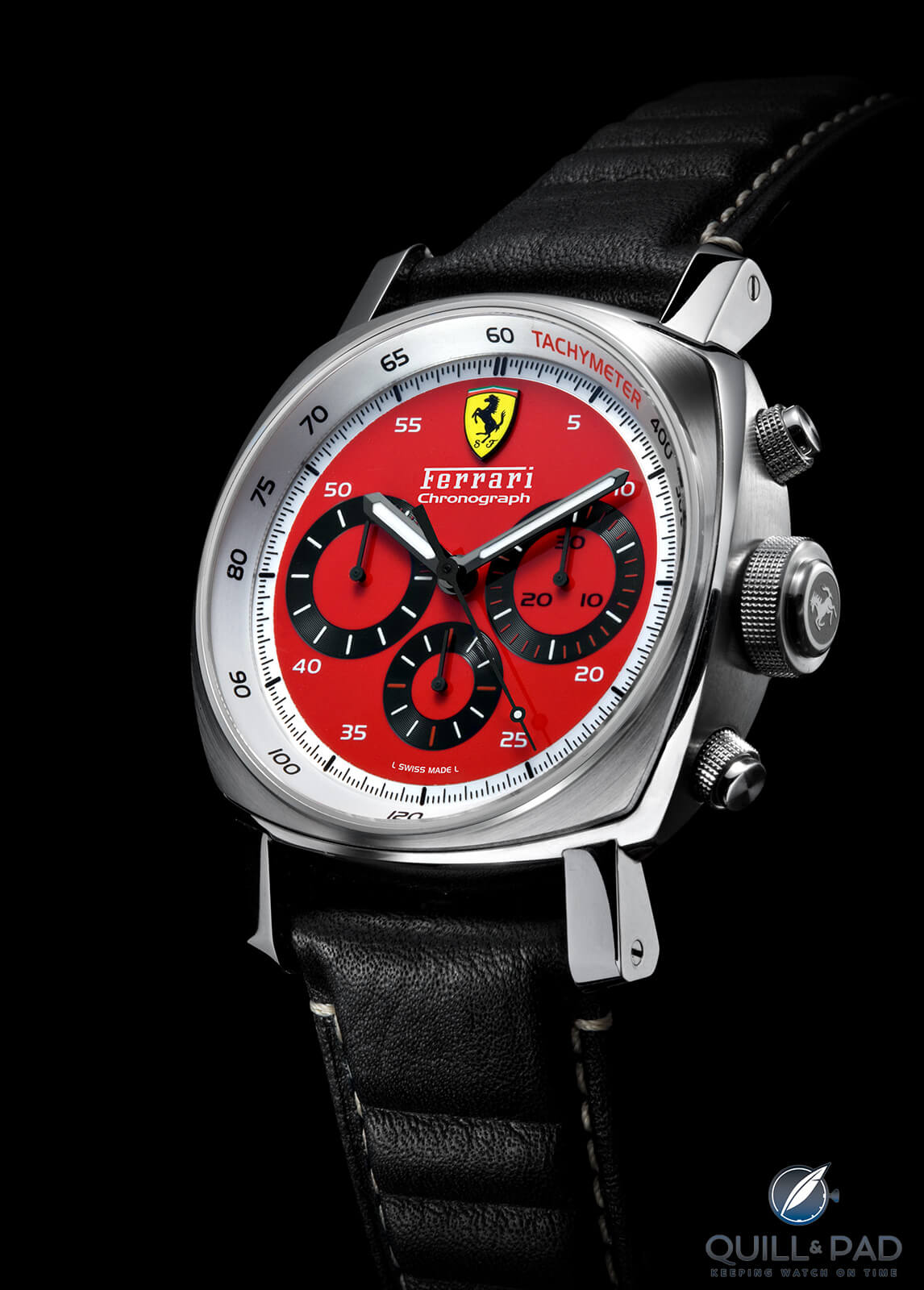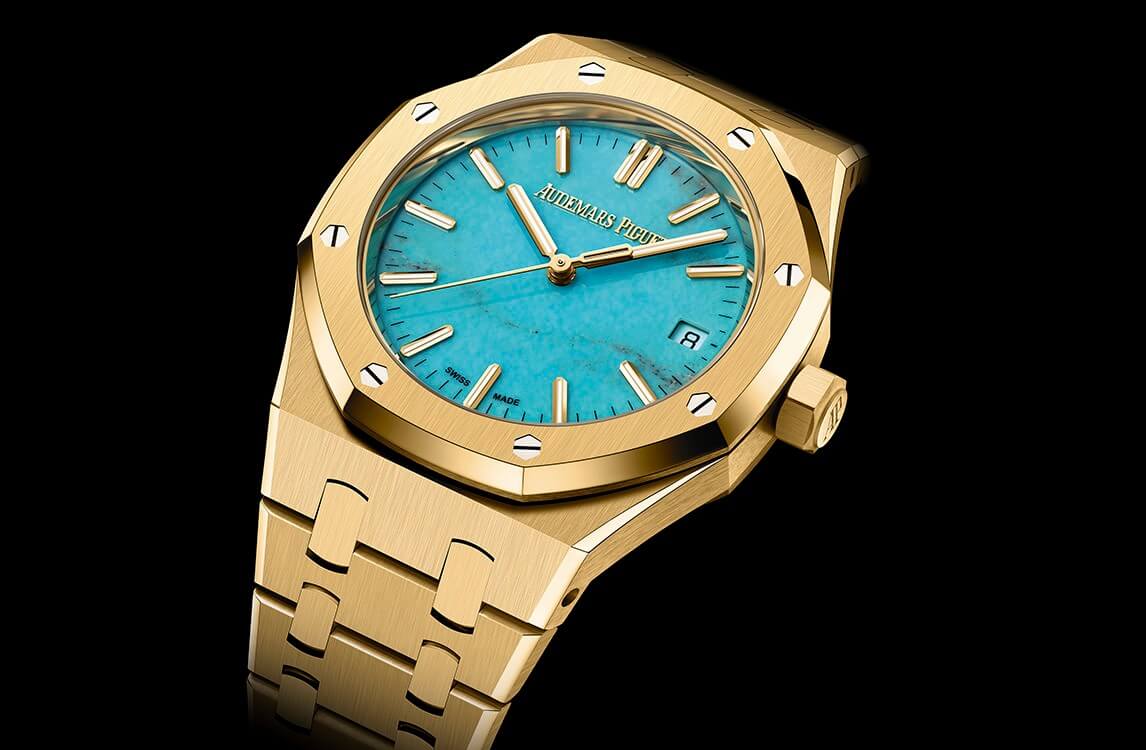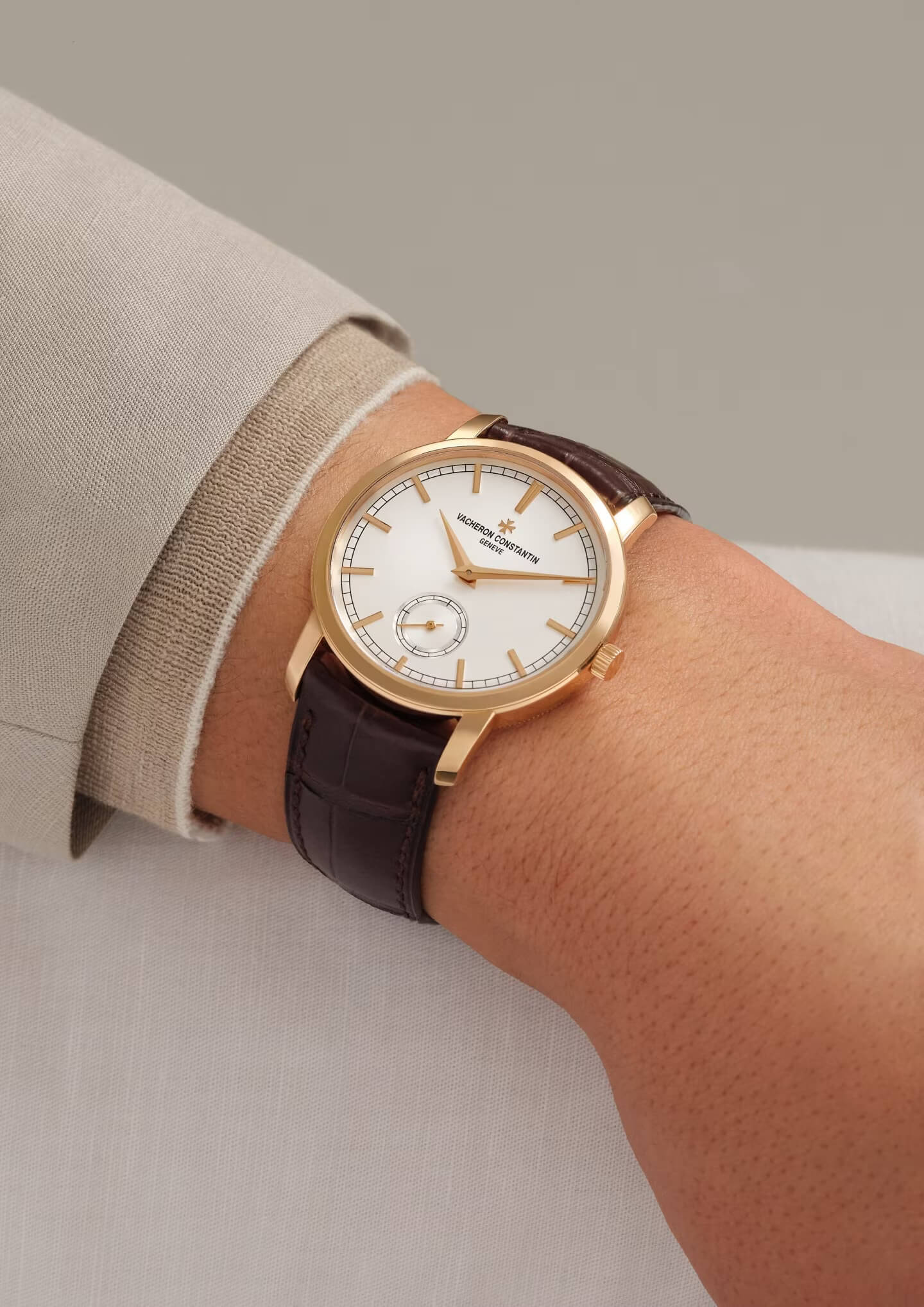Edition Impossible: Exclusive + Available + Inferior
Aside from reissues, seasonal novelties, and the obligatory good cause watch, made from marine debris and Greta Thunberg’s recycling bin contents, editions come in two main flavors:
One: Commemorative, recalling a historical event, such as the moon landing, for example, or paying tribute to an institution or an individual held in high regard, often billed as anniversary models minted to mark X years since Y.
And two: Collaborative, opening the door to a wealth of co-branding possibilities, where watches wear logos, colors, and design cues from another organization’s wardrobe – in some cases from another watch company.
From there, they split into Limited and not-so-limited. Limited editions are either individually numbered (69/420) or unnumbered (One of 666). On the flip side, not-so-limited runs are often labeled “Special,” although most of the time they’re not.
These usually roll off production lines that start strong but lose momentum shortly after launch, eventually coasting to a halt and sealing the fate of their offspring: a quiet, unceremonious death.
Here today, gone tomorrow.
Collabs seldom pan out. It’s a matter of compatibility and connection, not only between the two brands, but also between the target customer and both brands. Satisfying such a criterion is, as you’d expect, a tall order. Plus, it only makes sense for brands of the same tier to team up.

David Beckham and Breitling
Let’s say Sebastian (rich guy) loves McDonald’s and loves a V12 Ferrari. You might think that a red and yellow Mickey-D-themed Dodici Cilindri would sweep him off his feet, but you’d be wrong. Prancing horses and golden arches don’t go together. Sebastian knows this. He also knows he’s not doing himself any favors by pulling into the country club in a Happy Meal on wheels, so there’s that, too.

The Breitling for Bentley GMT Chronograph British Racing Green of 2010 was an even bigger 49 mm
Breitling and Bentley, on the other hand, are great together: both brash and glitzy, lugging roughly the same weight in brand equity around town. Say what you want about either, but “Breitling for Bentley” works. No wonder they’ve been swapping spit for so long, although Kern seems to have put the kibosh on that relationship.
Conversely, Breitling for Chevrolet Corvette doesn’t work. Neither does Breitling for Shelby Cobra. Nor does Breitling for Ford Mustang. Get your middle-class, American everyman’s heap of third-tier muscle out of my Swiss timepiece, good sir.
While we’re on cars, let’s go back to our prancing horse and re-address the Eye-Talian in the room: Ferrari. Incidentally, they’re the subject of limitless co-branding cockups and perfectly exemplify the issue at hand. Today, their logo (much like Playboy’s in the 90s) is ubiquitous, found on countless knick-knacks and luxury products alike, including Panerai timepieces.

Ferrari Engineered By Panerai Scuderia Chronograph Reference FER00028
On the face of it, the two seem a good fit. Both come from Italy. Both produce mechanical, luxury products. Both pride themselves on refinement and performance. Plenty of common ground there, but should they make a baby on it? No. At least not if they want to move units.
The market for mashups isn’t strong enough. A lot of the people who like Ferrari don’t like Panerai, and a lot of people who like Panerai don’t like Ferrari. Your demo (Tifosi Paneristi) sits in a razor-thin Venn diagram intersection, mostly populated by folk who enjoy those things apart, not together.
And many of them don’t have the means to buy. That leaves two Armenian fellas based out of Miami. They get their watches from the grey market, where such things can be had for cheap. Of course, the logic applies across the board, but especially to the Red Devil, and for good reason.
See, Ferrari itself and the outlets it does business with sell a lot of tacky, overpriced merch: apparel, fragrances, keychains, coffee mugs, playing cards, umbrellas, and all sorts of worthless trinkets no self-respecting Ferrari owner would buy. When you superficially tack their logo on the face of your luxury watch and call it a day, you throw it in the mix with all that other junk.
Even if you go the extra mile by incorporating, say, a rattrapante and/or flyback chrono, it still won’t cut it, no matter how fun and fitting the complication. Simply put, aside from luggage specially designed to slot into the shallow recesses of your impossible-to-live-with supercar, anything that isn’t a Ferrari and is branded as such reeks of desperation.
Enough about Ferrari defiling watch faces. My biggest co-branding gripe is on the back. Picture this: I grab a watch and turn it over, keen on clapping eyes on the movement, only to be greeted by a penny-sized logo on the crystal, seemingly floating between it and the clockwork.
First off, what is that? A sticker? Like the decals they sell at sketchy gas stations? Second, I thought you wanted me to see the movement; hence the display caseback. But you’re hiding it behind a scrap of vinyl, so what gives? I lift the watch up high, tilt my head like an owl, and peer through at an angle, desperately trying to get a lock. Eventually, I will strain something.
Before I do, tell me what, exactly, is the idea? Are you sweeping your half-assed finishing under the rug? Or are you teasing me, showing me just enough to get worked up? If that’s the case, here’s a fun tongue twister to set you straight: This move plays less like lace lingerie on a lass and more like window bars between a boy and a view he’s trying to enjoy. Window bars are a permanent fixture; there’s no snapping them off or rolling them down. Bum deal, babydoll! Can’t we go au naturel?
Whether front or back, all this co-branding business is and always will be, I suspect, a bit of a reach. There are exceptions, obviously, but for the most part, it’s a nonstarter – a recipe for disappointment and depreciation.
Moreover, failing to move rare examples of a line that sells a treat when left alone is tragic. There aren’t even that many of them, according to the sales pitch, but you still can’t turn the batch over. Speaking of which, let’s talk numbers.
1969 may be the year man landed on the moon, but it’s too high a number for a limited edition. Try 69. If that’s too ambitious, rest assured, 250 and under is good. 100 and down is even better. 500? Pushing it. Either way, regularly churning out 2,000-unit editions spoils the point.
When the edition’s numbers begin to rival mass production, and even I can walk into a store and buy one, how exclusive is it? Like Woody Allen said: “I would never want to belong to any club that would have someone like me for a member.” He understands that a certain level of finagling makes the experience.
Availability and exclusivity are, whichever way you slice it, antithetical. The former generates cash for the seller, the latter cachet. It’s a case of one or the other for the industry. To compensate, its captains often make more of what they’ve supposedly discontinued, getting around the lockout hurdle by way of material.
“We’re only making two hundred and fifty of them,” they say, causing your ears to perk up like a Doberman’s. “Just two fifty,” you ponder, eyebrows raised. “Correct,” says the salesperson, pulling a well-rehearsed “You don’t see one of these every day” face.
Dazzled by the prospect, you throw your credit card down. Now you’re thirty thousand dollars worse off, but it’s worth it. What you have is rare and special, guaranteed to wow your peeps and jump in value. What’s $30k between friends?
But then, and this is a first-world problem of the most extreme degree, the company in question turns around and mumbles, “Oh, we’re also making two hundred and fifty units in yellow gold, two hundred and fifty in rose, and two hundred and fifty in platinum.”
Next thing you know, there are a thousand of them floating around. Now yours is one of many—too many, appearing on Chrono24 by the dozen, all trading under list. And you paid retail.
But wait, there’s more! Later, they announce they’re making two hundred and fifty of them in titanium, two hundred and fifty in tantalum, two hundred and fifty in ceramic, and two hundred and seventy-five in bronze (because bronze is quirky).
That’s a total of 2025 pieces, a number that corresponds with the very year you’ve been had. And all you can do is take solace in the fact that it says “One of 250” on the back. Different metal, different watch? Debatable, but not really.
Either way, it’s no secret that the edition proposition is a marketing ploy, designed to agitate your FOMO and play to your worst now-or-never impulses. You pay more, but do you get more? If it’s a redesign, boasting upgraded mechanics and/or finishing, yes. Special tooling required? Hell, yes! But if it’s a surface-level makeover, you don’t. You get “different,” which doesn’t always mean better.
Think of it as a riff on a classic cocktail: fun and edgy when the mood takes you, but when the novelty wears off, so does the appeal. That’s because, at its core, it’s an attempt to spice things up, not to improve on what you have. Compare the first Zonda to its successors for reference. Do that now. I’ll wait…
See? Let’s face it, they got it right the first time. Other versions are just that: versions. Derivative iterations of a good thing, corrupted by fussy alterations. A white moon watch may be more expensive. It may be more collectible, more striking, more polarizing. It may even be more substantial, but it just isn’t better.

Audemars Piguet Royal Oak with Tiffany blue dial
I feel the same way about Tiffany-blue Fifty-Seven Elevens and green/red Royal Oaks. The sensible, more common option is the one to get, but “sensible” and “more common” are turn-offs. People want “special” and “rare,” and the watch industry bends over backwards to scratch that itch. Sometimes it’s a hit, but – most of the time – the harder it tries, the further it misses.
Still, if that’s what you’re into, that’s what you’re into. And I will admit, there are many cool editions out there, worth collecting. Plenty, in fact. But they can be kind of goofy, too. I don’t know about you, but I’m not one to break the bank for a goofy shit – I just don’t have that kind of coin.
I’m not lining up, for example, to buy whatever that watermelon watch is. Or a Spider-Man Royal Oak. Or a Nespresso Big Bang. Or a Domino’s Pizza Air King.
I am, however, in the market for a Vacheron Constantin Traditionnelle, or Vash-Tridash, as the kids call it – the 38 manual-winding in red gold, to be specific. By happenstance, a limited-edition version is currently on offer, so I swung by my local boutique for a look-see.

The Vacheron Constantin Traditionnelle Manual-winding 270th Anniversary red gold variant (of which, for some reason, there are 370 examples) has been embossed with the brand’s Maltese cross, crisscrossing the dial. It’s an arty, stuffy effect, reminiscent of a wedding invitation or something you bought from Etsy.
Not good. Even the buttoned-up salesman agreed, albeit reluctantly. I’m not entirely immune to the rarity spiel, so I did, in spite of myself, entertain the idea. Watch in hand, I remember thinking, “Maybe I should buy both – the standard-issue and the limited.”
But then I remembered that I wasn’t a millionaire and decided not to do that. Perhaps that’s who these editions are for – rich folk with the means and the balls to play with their money: to buy both or one or the other or neither without breaking a sweat.
I’m not there yet, but I’m trying. In the meantime, one will do. I think I know which.
You might also enjoy:
So, You Want to Buy a Rolex? Well, Daddy-O, I’m here to Talk you Out of It!
The Re-Edition/Reissue Issue: Living in the Shadow of the Original



Leave a Reply
Want to join the discussion?Feel free to contribute!